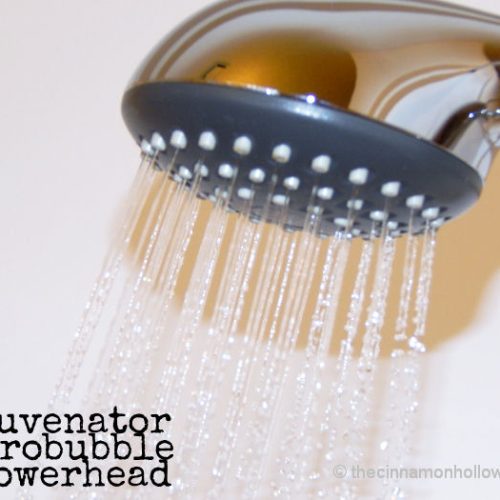Pests come in different forms. They could be tiny and pose only minor inconveniences, such as flies, ants, and termites, or they could be big and scary and pose a significant inconvenience, such as mice, rats, or cockroaches. Depending on how bad the infestation is you may need to hire a cockroach pest control specialist. However, if there are only a few stragglers or you’ve caught them early enough you may be able to deal with them at home yourself. Whatever the situation may be in your home, here are some tips on how to deal with pests yourself:

Keep Your Home Clean and Less Attractive to Pests
This one should go without saying; a clean home is less inviting and welcoming to pests. Pests come into your home for food, water, and shelter. Therefore, eliminating these attractions from your home will give them no reason to come in. Take the following steps to keep your home clean and pests away:
- Sweep, mop, and vacuum the inside of your home regularly
- All surfaces should be wiped clean, especially kitchen counters and dining tables
- Wash dishes daily, properly dispose of dirty dishwater after use and take food scraps out of the sink
- Store food and drinks in the refrigerator and sealed containers
- Don’t leave your pet food and water bowls exposed overnight. Always keep them covered
- Declutter your home and get rid of things like old magazines, cardboard boxes, and so on. Pests prefer to hide in the clutters these items create and can go undetected for a long time
- Use garbage cans with locking lids and empty them regularly.
Seal the Pests Out
Without a way in, pests can’t get into your house. However, some pests are so small that they can fit through even the tiniest openings. This makes keeping pests out of your home difficult. The following steps will make it easier:
- Inspect the outside of your home from the foundations to pipes, vents, chimneys, and roofs for potential entry points and seal them
- Make sure all windows and doors have screens
- Replace or repair damaged window and door screens.
Maintain the Surroundings of Your Home
The areas surrounding your home are your first line of defense against pests, as they must come into the yard before gaining access to your house. This makes it essential to maintain the surroundings of your home and make it unconducive for pests. Here is how:
- Keep your grasses low and eliminate weeds
- Get rid of heaps of leaves and dirt, fallen branches, old automobiles, and machines
- Keep shrubs and trees at least 1-2 feet away from your property. This makes it more
- difficult for pests to have direct access to your home
- Maintain your drainage systems, eliminate any stagnant body of water and fix leaky pipes and faucets both outside and inside of the home
- Regularly clean your gutters
- Replace wooden structures that have been damaged by moisture
- Store firewood off the ground or in wood boxes with lids, and keep them at least 30 feet away from your property. Also, inspect them before taking them into your home
- Mulch should be kept away from the foundation and at least 8 inches between the ground and the siding. This is because the wood or composite sidings absorb moisture and create a breeding ground for pests.
Keep Your Home Dry
When controlling pests, keeping your home well-ventilated and dry will go a long way. Pests are generally attracted to moist and dark places, and attics, crawl spaces, and basements provide the perfect condition for them. You can use a dehumidifier to decrease the moisture in these parts of your property.
Do Your Laundry Regularly
Pests like bed bugs and mites will naturally seek shelter in bedspreads, duvets, and clothes. Therefore, it is vital to regularly wash any piece of clothing you come in contact with at least 3 to 5 times a month, such as blankets, towels, and sheets. Also, wash your pets’ bedding to prevent and eliminate ticks and fleas.
Make Use of Chemical, Electronic, and Natural Pest Repellents
Pest repellents like https://selfcontrolpest.com/ are substances that are used for the prevention, destruction, and mitigation of pests. These repellents can be a mixture of chemicals, electronic devices, or even living organisms. The type of pest repellent you use should depend on the unique conditions around your home.
In the case of natural repellents, they can be a great alternative to traditional chemical repellents as they provide an eco-friendly method of controlling pest. Plants and animals of the following species can be used as natural pest repellents:
Plants
- Basil – flies, beetles, and mosquitoes
- Catnip – roaches, ants, and weevils
- Chrysanthemum – ants, bed bugs, beetles, cockroaches, ticks, and fleas
- Lavender – fleas, flies, mosquitoes, and moths
- Lemongrass and citronella – fleas, ticks, mosquitoes, and lice
- Pitcher plants – beetles, ants, bees, slugs, snails, flies, and wasps
- Rosemary – beetles, roaches, flies, slugs, snails, and mosquitoes
- Spearmint – ants, beetles, fleas, moths, and rodents
- Venus flytrap – all insects
Animals
- Bats – mosquitoes and other insects.
- Green lacewings – aphids and spider mites
- Ground beetles – slugs and caterpillars
- Ladybugs – aphids
Leave the Good Ones
While household pests can be both destructive to your home and dangerous to your health, some insects and living organisms are quite beneficial to have around, especially in an outdoor garden. Since these beneficial pests are great natural pesticides to use in place of chemical pesticides, there is no need to get rid of them.
Identify Common Pests in Your Area
Before you begin controlling pests yourself, an advisable thing to do is to identify the common pests in your area, the kinds of damage they cause, and the different requirements to eliminate them. Pests vary from location to location; therefore, proper identification is key to effective control methods.







